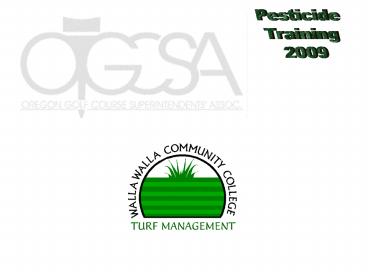I. Introduction to disease control - PowerPoint PPT Presentation
1 / 10
Title:
I. Introduction to disease control
Description:
I. Introduction to disease control A. Causes of Plant Diseases 1. Abiotic a. Non-living cause of a plant disease by a physical or chemical component of the ... – PowerPoint PPT presentation
Number of Views:217
Avg rating:3.0/5.0
Title: I. Introduction to disease control
1
(No Transcript)
2
I. Introduction to disease control
A. Causes of Plant Diseases
1. Abiotic
a. Non-living cause of a plant disease by a
physical or chemical component of the
environment that is harmful to plant growth
b. By definition, abiotic diseases cannot spread
from plant to plant
c. Abiotic plant diseases could include
Temperature extremes - winter kill, frost damage
Soil moisture extremes Soil nutrient
deficiencies or imbalance Agricultural
chemicals Lightning, hail, wind, or pollutants
3
I. Introduction to disease control
A. Causes of Plant Diseases
1. Biotic
a. Living cause of a plant disease by a pathogen
- any living organism capable of causing
disease in a particular host species
b. Most biotic pathogens are parasites, which
grow and reproduce only on living plant
tissues
c. Major groups of plant pathogens could
include Fungi Bacteria
Mycoplasmalike organisms Viruses Nematodes
4
I. Introduction to disease control
B. The disease triangle
1. Host plant
a. Type of grass or grasses that are affected by
this Disease (pathogen)
b. This is sometimes different within grass
species - different cultivars of the same
species might have different degrees of
susceptibility
Host Plant
5
I. Introduction to disease control
B. The disease triangle
2. Pathogen
a. The disease causing organism
b. This could be a fungus, bacteria, virus, or
non-living agent. Parasitic or non-parasitic
pathogen
Host Plant
Pathogen
6
I. Introduction to disease control
B. The disease triangle
3. Environment
a. Environmental conditions that favor the
development of the disease
b. These conditions might include temperature,
humidity, wind (or lack there of), time of
the year, and moisture content (either in the
air or in the plant)
Host Plant
Pathogen
Environment
7
Locations for Testings
For times and locations for testing to obtain a
Applicators License, call your local Community
College, or the Department of Agriculture in
your state.
Clackamas Community College 503-657-6958 ex.2269
Mount Hood Community College 503-491-7592
Portland Community College 503-614-7289
Chemeketa Community College 503-399-6556
ODA 503-986-4635
8
Suggested Guidelines for Maintenance Staff
1. Be observant
2. Know and understand what healthy turf looks
like
3. Report anything that looks different than
healthy turf
4. Ask questions
5. Invest in a good pocket magnifying glass
6. Take the Turf Management Program at
Walla Walla Community College
9
Questions?
10
(No Transcript)

